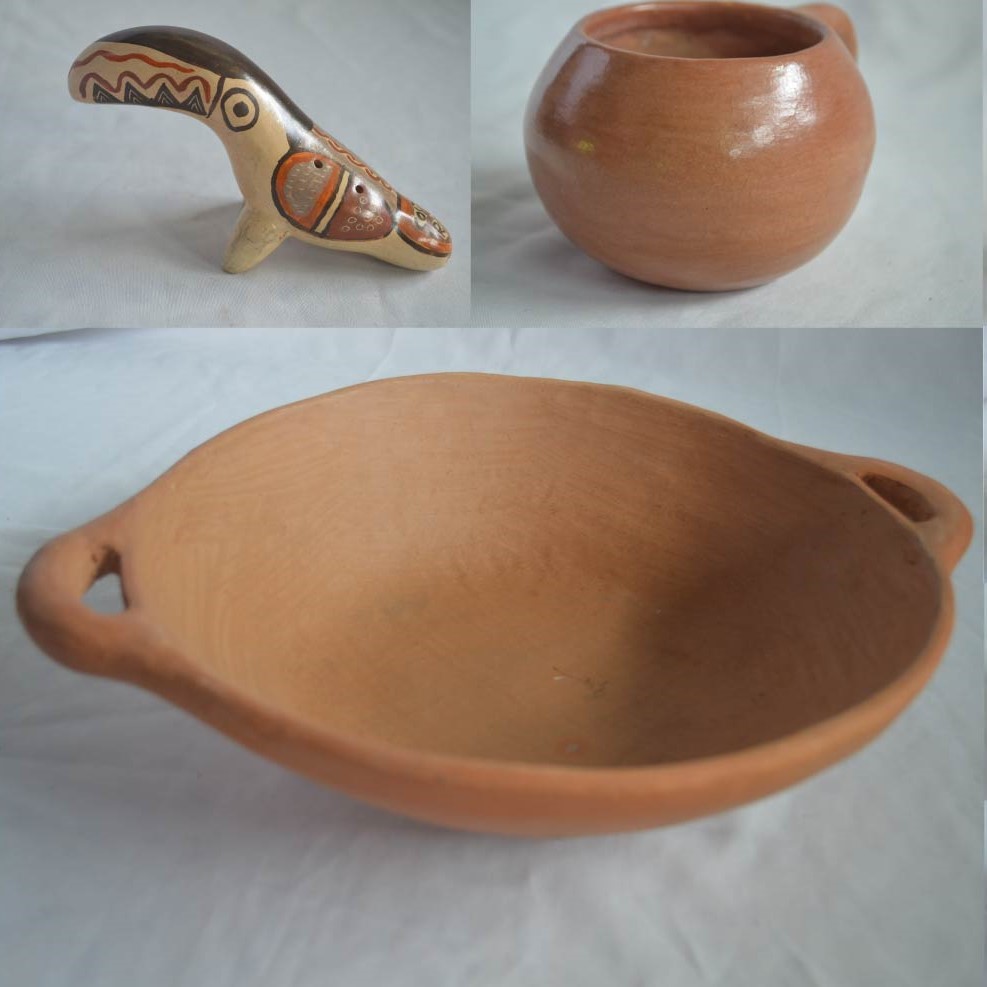Abstract
The study area is located between the towns of Santa Cruz and Nicoya, Guanacaste, it is a geographic area of 164 km2 with a dry to humid tropical climate, where igneous and sedimentary rocks are exposed on the surface. Our research it is a geological prospecting, evaluated and analyzed the clays from a mechanical, edaphological and ceramic perspective to determine the quality of the ceramic products generated using the soils in the study area. A total of 44 soil samples and 30 rock samples were collected from locations near the floodplain. The results obtained show that altered basalts bearing secondary aluminosilicate minerals and silica-rich sandstones are the main precursor rocks for clays used in the manufacture of ceramics by potters from Chorotega region. It is also verified that the soils of the study area belong to the vertisoils and alfisoils taxonomy, which can generate good quality ceramic pieces, since they are ballclay and fireclay type clays (Nelson, 1960). They show porosities between 51 % and 61 %, plasticity indexes raging from 14 to 29, densities greater than 1,7 g/cm3, a content of fines greater than 59,9 %, and when cooked, they have less than 11 % shrinkage and less than 30 % moisture loss. Therefore, the study concludes that the soils have the appropriate ceramic properties to be able to produce pieces with few ceramic defects, resistant and without problems either for their slip or for the final details and decorations.
References
Alvarado, A., Mata, R., y Chinchilla, M. (2014). Arcillas identificadas en suelos de Costa Rica a nivel generalizado durante el período 931-2014: i. Historia, metodología de análisis y mineralogía de arcillas en suelos derivados de cenizas volcánicas. Agronomía Costarricense, 38(1),75-106.
ASTM International. (2005). Standard Test Methods for Laboratory Determination of Water (Moisture) Content of Soil and Rock by Mass (ASTM D2216-05). American Society for Testing and Materials. https://doi:10.1520/D2216-05
ASTM International. (2000). Standard Classification of Soils for Engineering Purposes (Unified Soil Classification System) (ASTM D2487-00). American Society for Testing and Materials. https://doi: 10.1520/D2487-00
ASTM International. (2014). Standard Test Methods for Specific Gravity of Soils Solids by Water Pycnometer. (ASTM D854-14). American Society for Testing and Materials. https://doi:10.1520/D0854-14
ASTM International (2016a). Standard Test Methods for Particle-Size Analysis of Soils (ASTM D422-63(2007)e2). American Society for Testing and Materials. https://doi: 10.1520/D0422-63R07E02
ASTM International. (2016b). Standard Test Methods for Minimum Index Density and Unit Weight of Soils and Calculation of Relative Density (ASTM D4254-16). American Society for Testing and Materials. https:// doi:10.1520/D4254-16
ASTM International. (2017). Standard Test Methods for Liquid Limit, Plastic Limit, and Plasticity Index of Soils (ASTM D4318-17). American Society for Testing and Materials. https:// doi: 10.1520/D4318-17E01
Astorga, A. (1987). El Cretácico Superior y el Paleógeno del vértice pacífico de Nicaragua Meridional y Costa Rica Septentrional. [Tesis inédita de licenciatura]. Universidad de Costa Rica.
Chang, G. (2019). Riesgos de la producción cerámica tradicional de Nicoya e interacción de la diversidad patrimonial. Vínculos, 39(1-2), 115-134.
Dengo, G. (1962). Estudio geológico de la región de Guanacaste, Costa Rica. Instituto Geográfico Nacional.
Denyer, P., y Arias, O. (1993). Geología del norte de la Península de Nicoya, Costa Rica. Revista Geológica de América Central, 16, 69–84. https://doi.org/10.15517/rgac.v0i16.13269
Denyer, P., Aguilar, T., y Montero, W. (2014). Cartografía Geológica de la Penísula de Nicoya, Costa Rica: Estratigrafía y Tectónica. Editorial UCR.
Flores, K. (2003). Propuesta tectonoestratigráfica de la región Septentrional del Golfo de Nicoya. [Tesis inédita de licenciatura]. Universidad de Costa Rica.
Flores, K., Denyer, P., y Aguilar, T. (2003). Nueva propuesta estratigráfica: geología de las hojas Matambú y Talolinga, Guanacaste, Costa Rica. Revista Geológica de América Central, 28, 131–138. https://doi.org/10.15517/rgac.v0i28.7793
Guadamuz, D. (2019). Localización de recursos útiles de arcillas para la producción de cerámicas en la región chorotega de Costa Rica. [Tesis inédita de licenciatura]. Universidad de Costa Rica.
Instituto de Desarrollo Rural (Inder). (2016). Caracterización del Territorio Santa Cruz-Carrillo. [Informe inédito]. Inder. https://www.inder.go.cr/santacruz-carrillo/Caracterizacion-territorio-SantaCruz-Carrillo.pdf
Kuijpers, E. (1979). La geología del Complejo Ofiolítico de Nicoya, Costa Rica. Informe Semestral IGN, 2,15-75.
Morales, J. (2015). Tecnología de los materiales cerámicos. Diaz de Santos.
Munsell Color. (1975). Mussel Soil Color Charts. Munsell Color Co.
Nelson, G. (1960). Ceramics a potter´s handbook (1a ed.). Holt, Rinhehart and Winston, Inc.
Norton, F. (1979). Cerámica para el artista alfarero (14a ed.). Continental (CECSA).
Padilla, A. (2016). Prospección de arcilla para materia prima de Cerámica Chorotega. [Informe final Inédito]. Ministerio de Hacienda.
Rubí, J. (2011). Diagnóstico de las comunidades productoras de Cerámica Chorotega, Guaitil y San Vicente de la provincia de Guanacaste en Costa Rica. [Informe Inédito]. COOPESANGUAI.
Salas, I., Camacho, F., y Guier, I. (2015). Huellas de nuestra raíz Chorotega. Recorrido histórico de los primeros pobladores en la Gran Nicoya (1a ed.). Masterlitho.
Salas, I., y Hernández, S. (2012). Descripción de origen de la Cerámica Chorotega. Masterlitho.
Weil, J., y Herrera. A. (2014). La herencia alfarera en la península de Nicoya: Persistencia de una tradición. Cuadernos de Antropología, 24(2), 25-47. https://doi.org/10.15517/cat.v24i2.17789
##plugins.facebook.comentarios##

This work is licensed under a Creative Commons Attribution-NonCommercial-ShareAlike 3.0 Unported License.
Copyright (c) 2023 Diego A. Guadamuz, Luis G. Obando-Acuña, Stephanie Murillo-Maikut, Pilar Madrigal


